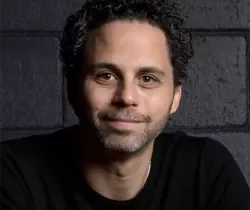I think I speak for most of us when I say that in-person events are one of those things we didn’t realize we loved until they were gone. And when events and other face-to-face gatherings started shutting down over the last year, an incredibly important channel for personalized conversations and relationship-deepening evaporated.
Since then, businesses have given their best college try to replace this lost value, with mixed results. While virtual events in and of themselves have largely done well, there’s a major missed opportunity that’s consistently overlooked: post-event content. Here’s why this matters, and what you can do to make the most of the content you created long after the event itself is over.
Unreasonable Expectations
Most companies will acknowledge their buyers are busy, and that time is money, yadda yadda. Yet when they host a virtual event, they seem to forget about this entirely and expect their audiences to be online, waiting patiently for their content to be rolled out according to the event organizer’s schedule. What? Does this make sense to anyone else?
Here’s the thing: your attendees are not only busy, they’re also overwhelmed. Many of them are working from home, with some of them also tending to kids who are at home and possibly in need of help with distance learning. Even if they don’t have kids to care for during the day, they have work meetings to dial into, deliverables to wrap up, dogs to feed and groceries to get.
How can you expect them to shut down the rest of their lives and priorities just so they can catch your breakout session speakers at the exact moment you scheduled them? It’s honestly unreasonable, and bordering on arrogant, to expect this. But then, what’s the alternative? Well, I’m getting there.
"Always On" Events
The first problem is trying to hold attendees to your time schedule, and the second is what you do with your content post-event. If some of your audience missed your sessions, where do those recordings go after the event is closed? Most businesses put videos and other content from digital events on their website. It goes in their video or resources section, thrown haphazardly up there with no rhyme or reason.
This alone kills post-event engagement. Even if someone was super jazzed about hearing one of your speakers’ talk tracks and tried their best to attend the session (ultimately failing due to other competing obligations), they’re not going to sift through your web content to dig it out later.
This is why you need to think of your events as “always on.” When they’re over, they live on through your website in an organized way that helps folks find the content they wanted to access in the first place and continue to follow along with more content that’s relevant to them – on their own terms, at their own pace.
Here’s how you do this:
- Centralize content: Put it all in one place.
- Organize content: This is where the magic happens. Spend time thinking about how you would present this information in person, and to whom. How can you tag your content and group pieces together in a way that naturally moves viewers/readers along a path of engagement? Keep similar content together, and ensure that it’s relatable to its intended audience.
- Personalize experiences: This is where you plan to unleash ABM campaigns around content topics that solve customer problems.
- Distribute content: Many attendees (whether they actually attended your digital event or planned to but got sidetracked) will check out your website after the event just for funsies. But, don’t leave this part to chance. Make sure you’re also being abundantly clear about the content that’s available to them via avenues like your email signature, display ads, LinkedIn ads and so forth.
An example of a company that does post-event engagement very well is Peloton. You can join a bike ride when it’s live at a scheduled time and, heck, plenty of people do. But if that doesn’t work with your schedule, you can instead opt to join the same ride six hours later. If there are enough people gathering at that point, you can still engage with the community and take the ride together, enjoying being part of a live leaderboard and high-fiving fellow riders in the moment. Or, if there aren’t enough people to make that happen, you can simply do the ride on your own.
This model caters beautifully to today’s buyers. They need options when it comes to consuming content, and you need to offer those options. Take this same concept and apply it to your events. How can you factor in your audience’s interests, and communicate that you respect their time and lives outside of your event? The answer is by organizing and distributing your content thoughtfully after the event so they can access it and enjoy it as they wish. Make this one change, and you’ll get a significant boost in engagement. It’s really that simple.



Add new comment